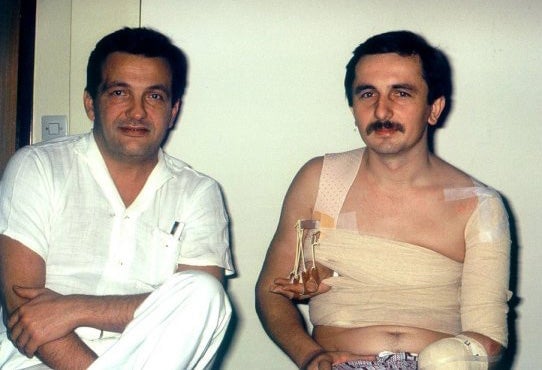Why are Chinese surgeons so keen on grafting hands onto legs?
After a Chinese man severed his hand in an industrial accident, surgeons decided to graft it onto the patient’s leg to keep it from deteriorating. A month later, the hand was replanted onto the arm, and the man is said to be making a slow recovery.

After a Chinese man severed his hand in an industrial accident, surgeons decided to graft it onto the patient’s leg to keep it from deteriorating. A month later, the hand was replanted onto the arm, and the man is said to be making a slow recovery.
However, this isn’t the ”groundbreaking surgery“ it has been made out to be. “The operation is only noteworthy because the picture is eye-catching,” Dominic Furniss, a plastic surgeon and associate professor at Oxford University, tells Quartz. “Plastic surgeons perform [equivalent operations] routinely throughout the world on a daily basis.”
Replantation surgeries have been performed since 1965. The world’s first procedure involved a thumb, but the technique has since been used for arms, legs, ears, and penises. The level of function in the replanted organ can vary, but it’s never quite fully functional.
A replantation surgery usually involves three steps. First, the damaged tissue is removed from both portions. This is done to ensure that in case the reattachment fails, the stump can be allowed to heal on its own. Then bones are shortened and joined with pins, wires, or plates and screws, which allows the two parts to be held together. Finally, tendons, arteries, veins, and nerves are repaired, which may sometimes require grafts from other parts of the body or a tissue bank.
A hand replantation typically takes between six and eight hours, according to Furniss. “The patient would begin rehabilitation within one week, and leave hospital within two weeks,” he says.
But the Chinese surgeons split the surgery into two parts. Instead of replanting the hand right away, they let the stump heal for a few weeks. In the meantime, they grafted the hand to the leg so that it would survive this period.

Such a graft involves taking easily-accessible blood vessels from one part of the body and attaching them to the severed body part. Ankle, groin, and under-arm areas have such blood vessels. Marko Godina, a Slovenian plastic surgeon, was the first person to perform such a grafting operation in 1984, when he attached an amputated hand to area under an arm.
Tang Juyu of Xiangya Hospital, who performed the recent surgery in China, tells Quartz that he felt the two-part procedure was necessary. The stump was badly crushed and the patient had lost too much blood, which could be dangerous for someone undergoing a long surgery at the outset. And this is the second time Tang is performed such a two-part replantation.
Ganga Hospital in Coimbatore, India has seen more than 2,000 replantation surgeries in the last 15 years. Hari Venkatramani, a leading plastic surgeon at Ganga Hospital, agrees with Tang’s assessment of the situation.
A single-operation replantation surgery requires removal of damaged tissue, which in a severely crushed stump could mean losing a lot of the body part. If the limb is immediately replanted on to the body part, it might look more grotesque: Think about a hand attached at the elbow.
“For the layman it might look strange, but such two-part replantation surgeries have been performed many times before,” Venkatramani tells Quartz. “Such cases are still quite rare, because you need the severed limb to be in a good condition even if the stump isn’t.”